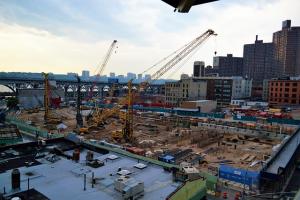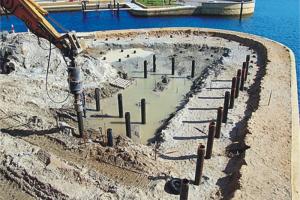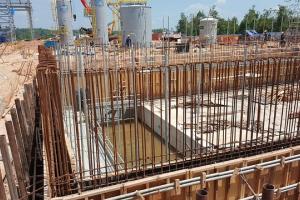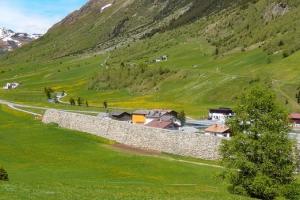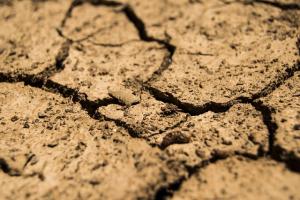Pile Foundation - Design, Construction and Factors Affecting Piles
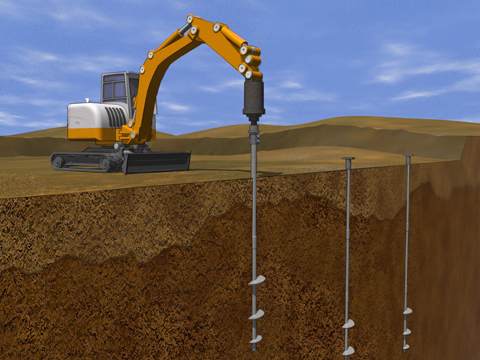
Pile Foundation
A pile is basically a long cylinder of a strong material such as concrete that is pushed into the ground to act as a steady support for structures built on top of it. Pile foundation has many applications as will be explained below.
In foundation practices, the main point of concern is bearing capacity of soil. Bearing capacity can be defined as the maximum load that can be carried by the soil strata. When the soil is strong enough that it can carry the whole load coming on it, then we use shallow foundation. Shallow foundations are usually used where hard soil strata is available at such a depth that construction of foundation is not too costly.
If hard soil is available at deeper levels of earth, then there is a need of some source that can transfer the load of the structures on the deep hard soil strata. This source can be said to be as the deep foundation. Pile foundation is a type of foundation in which pile is usually used as the source to transfer the load to deep soil levels. Piles are long and slender members that transfer the load to hard soil ignoring the soil of low bearing capacity. Transfer of load depends on capacity of pile. There is a need that pile should be strong enough to transfer the whole load coming on it to underlying hard strata. For this purpose, pile design is usually given much consideration. Depending on the load, type of material is usually selected for the piles.
Different types of Piles are usually made from following materials:
- Timber
- Concrete
- Steel
- Composite pile
Design Consideration of pile foundation:
It is understood that pile is the basis for design of deep foundation. The very first step in the design of pile foundation is selection of right type of pile. Selection of type, length, & capacity of pile depends on following parameters:
- Soil condition
- Magnitude of load (Load capacity of Piles)
Construction of Pile Foundation
In actual construction, first pile load test is performed on the soil to verify soil strength that whether it can take the load of pile or not.
Factors Affecting Selection of Piles
Factors which affect the selection of pile are as under:
- Length of pile in relation to load and soil condition
- Behavior of structure
- Availability of material in locality of construction
- Type of loading
- Ease of maintenance
- Availability of funds
- Factors causing damage
- Cost of piles
Geo technical design of pile foundation:
By geotechnical design we mean two things:
- Depth below the ground
- Dimensions
The total load carried by the pile and its elements is said to be the ultimate load. It is usually denoted by 'Qu'. Load that can be carried by pile is due to its shaft and bearing resistance.
Qu = QS + Qb
Where QS is shaft resistance and Qb is bearing resistance
Load Carrying Capacity of Piles
Usually three methods are used for the calculating the capacity of pile:
- Static formula (this formula is applicable to driven and insitu piles)
- Dynamic formula (this formula is applicable to driven piles)
- Load Test (this test is usually done two times the design load. If it is stable then pile is considered O.K. This test is quite expensive and time consuming. Load application is also very much difficult in this test)
Two more things which have importance in pile foundation design are:
- Pile spacing
- Negative skin friction
Too much close spacing between the piles causes overlapping of pressure bulb. Piles should be spaced so that the bearing capacity of group is not less than bearing capacities of individual piles in group. The fill above the original soil in which pile group is established usually settle down under its own weight. This will exert drag on pile in addition to friction between pile and soil. This adds to the load on the pile instead of resisting it. It is said to be as negative skin friction. Being the extra load it must be taken into account in design of pile foundation.



